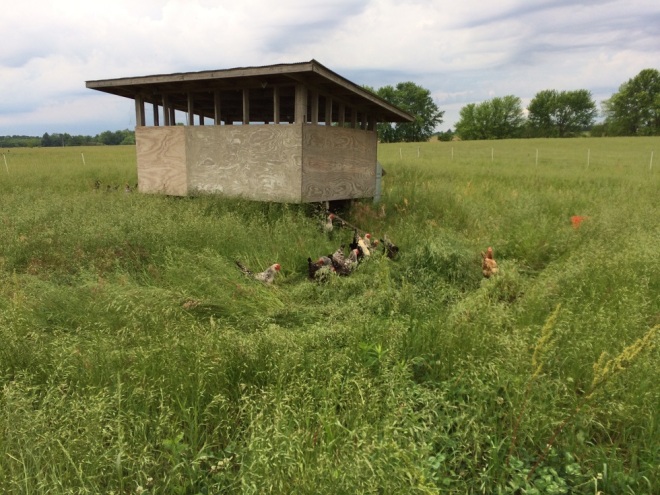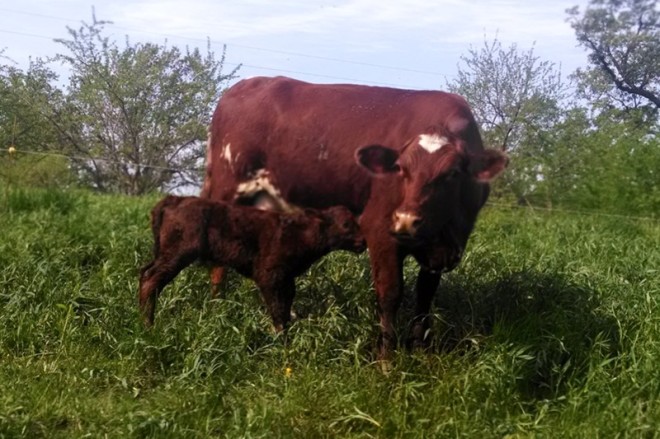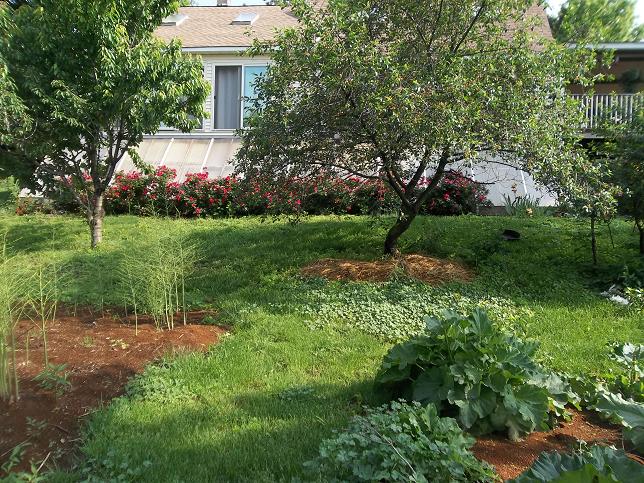The secret to comedy is timing.
Timing. Get it?
That’s the secret to grazing too. Today I am going to reference a couple of articles I found by Ian Mitchell-Innes that I think are instructive and challenging. First, from the poorly-titled Energy is Money, Money is Energy, Time is Money, Water is Money:
It is to make sure you do not loose animal performance, while you the manager and animals, are going through a learning curve.
Let’s talk about animal performance. As I shared yesterday, I took six heifers off of a feedlot where they were fattening on hot feed and put them on grass. Of that first six, two were not physically capable of breeding. The remaining four all gave me calves but only one has shown that she can give me a calf each year and even she has problems. Zero out of six heifers work on grass. Their offspring, however, look promising. If that second generation come up open it is because I mismanaged my resources.
Because of timing.
41 and 111 did not breed back this year because I didn’t manage energy correctly. Either I had too many cattle on too few acres or I had cattle on the right amount of ground but my grazing intervals were too short. As a third option, our grass is poor and I should have fed hay to build fertility. Whatever. My fault.
But there is more. Time on our farm has been mismanaged for generations, as Ian says in the post:
There is increasing evidence, that we humans, particularly since the advent of barbed wire, have managed in such a way that we have reduced the effectiveness of our soils. The result being the plants growing on those soils, do not capture the amount of Energy from the Sun, which used to be captured.
Our pasture soils are poor but improving. We have pastures that were overgrazed and compacted and growing only sparse, short grasses that are now dense with a large variety of tall plants…many of which are “weeds”. When we first moved there were many places you could lay down a hula hoop and encircle no more than 10 plants. Most of the pastures had deep ruts and cow paths carved into them from the cows walking to and from the barn to eat corn every day for decades. We are transitioning from sparse grasses, dense ragweed and thorny trees everywhere to a large variety of dense grasses and forbs and more desirable species of trees. But we are only beginning. Our pasture has not recovered even a portion of it’s potential capacity. But between then and now I have to make money. To do that I have to find energy to feed my cattle.
If you do not get animal performance you will go broke!
That simple statement is restated in another post on his site:
The first thing to consider is animal performance, as this is the financial aspect of all livestock based operations. The Land and what grows on it, is a solar panel.
‘The limiting factor to all animal performance is Energy’, be it re-conception or weight gain.
Ugh. Energy again. His original post he lists the following points:
Some of the things we have learnt are :-
- The bigger the herd, the better the animals do and the quicker the soil is restored.
- The more Carbon (plant material) is trodden onto and into the soil, the better the soil does.
- We need to manage the livestock to make sure the soil is covered with growing plants or litter, to keep the soil at a more constant temperature and feed life in the soil.
- We also know that selection of grazing makes animals perform (fat).
If I am not mistaken, Chad Peterson claims that the behavior of cattle changes when you get 300 or more in a group. Grazing is less selective and soil impact is greatly increased and manure distribution is more even. Julius Ruechel illustrates other behavioral changes in his book Grass Fed Cattle. The mob bunches tightly and weaker animals are pushed to the perimeter. It is easy to see the poor-doers even from a distance. Johan Zietesman wrote in his book Man, Cattle and Veld that we need to focus on growing our herd with the best genetics available but we need to keep some of the sub-par animals around while the herd is growing to keep the mob large and the pasture moving forward by stepping more litter into the soil and adding more manure.
That third point, about making sure the soil is covered, is difficult for me. Greg Judy wrote about a failure he perceives in our practice of putting up hay. By cutting, raking and baling the ground we remove the potential for soil litter. We are stripping away the soil’s protection. I find that to be very difficult. He suggests we aren’t going to convince all farmers not to put up hay, heck, some people enjoy it so we should buy their fertility and put it on our farm.
OK. So we want a big herd to build soil. But is that all there is to it? No. Things change by season. Heck, thing change by day. Another article by Ian:
In the spring put all your animals in one herd and start moving them… The weather must be monitored every day (temperature and rainfall), and if you have started out with relatively slow growth, the day you wake up and it has rained or it is warmer, start moving faster. Slow growth, slow moves; fast growth, fast moves.
Do not force the animals to graze or tread the undesirable plants; if you do, you will lose animal performance. These ungrazed plants will die over a couple of years as no sunlight will be getting to the growing points at soil surface level. The dead plants leave a massive amount of carbon in and on the soil, holding water and enabling a desirable plant to germinate and establish itself.
I am always in awe of farmers pushing to put a million pounds of beef on an acre. Ranchers like Neil Dennis or Gabe Brown who pack the animals into tight breaks with multiple moves each day…amazing. It makes for powerful slides in a presentation but it is not the only strategy they use throughout the year, changing as conditions change. When the grass is growing quickly you give the herd room to roam. When the grass is growing slowly and the cows are dry you slow the grazing down, forcing them to graze, trample, manure and “remodel” a smaller area.
This year I boosted my numbers by bringing in some steers. We are grazing 60 acres with 27 head (29 a few weeks ago). Since April we have covered the entire farm 3 times. My goal is usually to rotate 4 times by June 1 but we just didn’t get it done. The cattle are allowed to be selective as we sprint across the landscape. But soon we will stop getting an inch of rain every week and we will need to increase the recovery period. Instead of grazing the whole farm every 20 days we will cover it in 60 days. Or 90 days. And if it gets really dry we may offer hay on pasture in rotation just to keep distributing manure and urine and encourage some amount of forage growth. Winter is an entirely different strategy.
It is all about timing. And the timing changes with the time of the year. And the conditions relative to that time. Right now we are getting a lot of rain. Right now we are moving the herd across 2 acres/day. When they enter the grass has recovered to at least 3′ tall and the clover is all in bloom again. We time our moves with plant recovery. When we achieve recovery before the cows cover the whole 60 we drop out portions of our farm. I skipped 7 acres on the last rotation.
But no matter what I do, 27 head is not the same as 300 head. It just isn’t. If Chad Peterson is right, I’ll need 300 head to see a behavioral change. Maybe by the time I get there I’ll know what I am doing. Because it takes time to learn. It takes time to grow grass. It takes time to put a herd together. And we are taking our time. Right now we just do the best we can with what we have: too few cows and an inexperienced but well-read farmer.
Tomorrow I will tell you about the worst field on the farm and how it became so awful. Here is a picture of it. Don’t be fooled by the green stuff growing there. It is of zero value to cattle.





















